A War Transformed: WWI on the Doggerland Front is a weird war, World War I game written by Frederick Silburn-Slater and published by Osprey Publishing. The rules seem to have dropped at an opportune moment, with both folk horror and WW1 wargaming having a bit of resurgence. I’m personally a big fan of the folk horror/historical mashup genre as it gives me an opportunity to mix my love of historical wargaming with fantastical elements that I usually don’t get a chance to model.
The rules could best be described as a mass skirmish ruleset. Using a point system, each player builds a force called a “patrol” which is ostensibly around a platoon worth of men (so 20-30 models per side for smaller games and 50-60 for larger ones). There are over 50 unit types in the book (not including summonable monsters) with most nations having access to around 25 unit options.
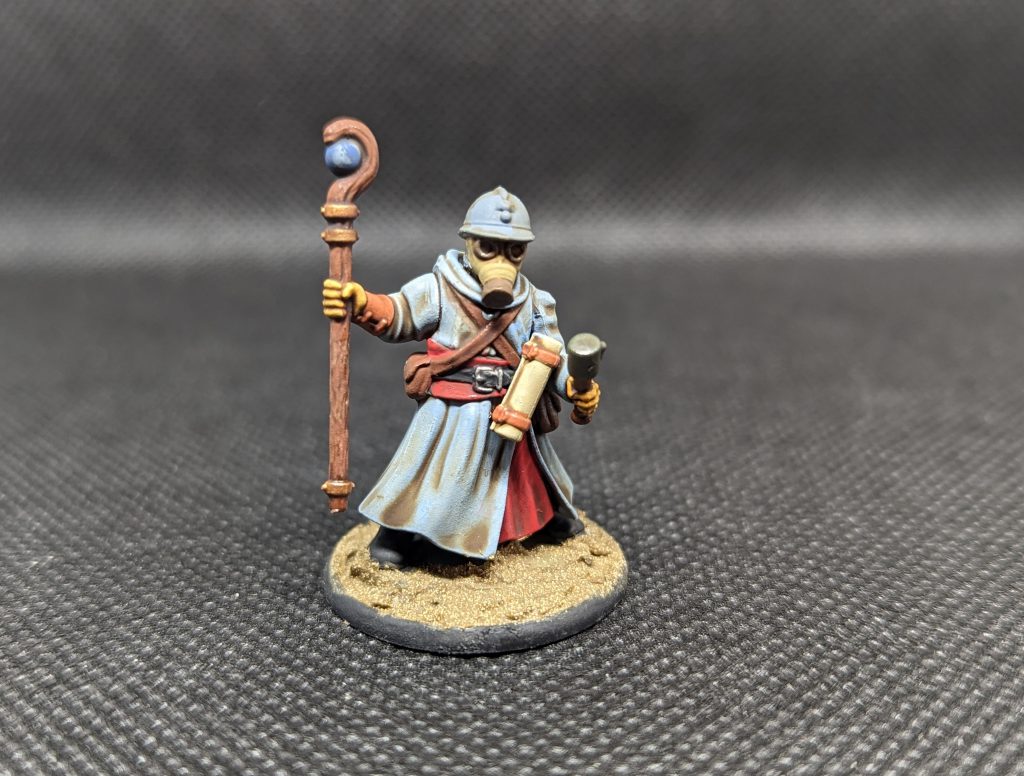
Support & Community
A War Transformed (AWT from this point on) is published by Osprey Publishing, a staple of the wargaming scene. This means the rules aren’t likely to disappear anytime soon. On the other hand, Osprey doesn’t tend to put out a lot of supplementary material for their games unless it sells exceptionally well.
As for community support, there is a passionate and active community that has sprung up around the game. Two groups have appeared on Facebook to discuss the game, each over 600 members at time of writing. These hobbyists are quite active, posting incredible pictures of their lovingly customized trench raiders, monsters, and terrain. Even if you don’t end up playing the game, joining the Facebook group is worth it just to see the cool stuff folks are creating for this ruleset.
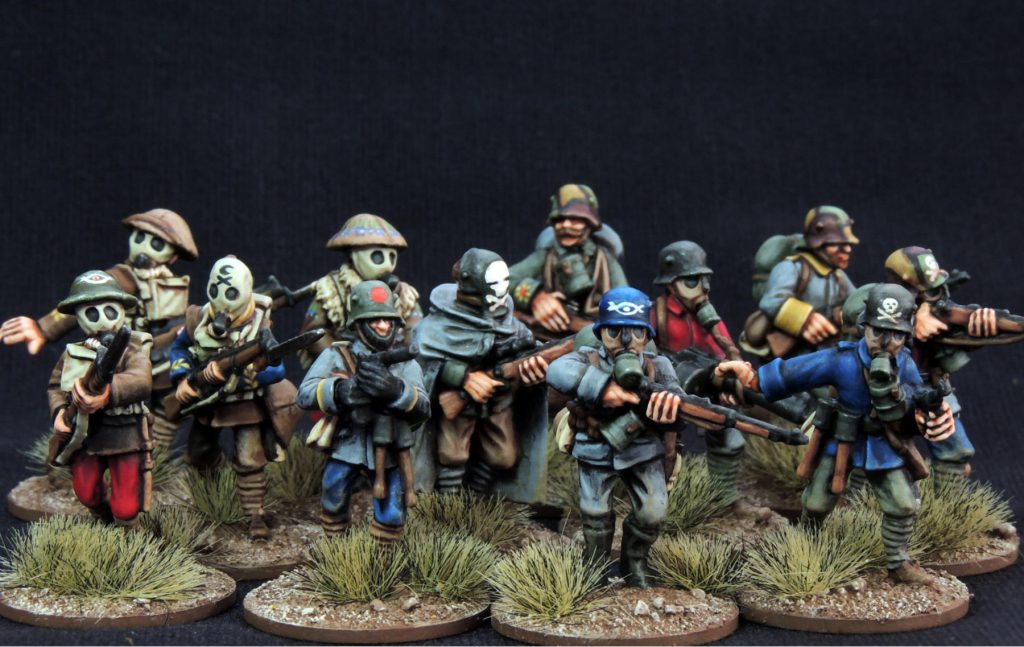
The author is also extremely active in these groups. You can find him responding daily to questions and giving updates on various things including the (much needed) Quick Reference Sheet.
Presentation
A War Transformed comes in two versions – a 218 page hardback rulebook, or a PDF ebook. I have both copies, as I got impatient waiting for my physical copy to ship, and also ordered the digital version as well. Having used both, I strongly recommend you spring for the physical book over the ebook. First, this is a hefty ruleset, and you’ll need to do a lot of shifting back and forth through the pages – something that just isn’t all that conducive on a tablet or laptop while wargaming. Second, the physical rulebook is lovely, with just absolutely great production quality and you miss out on a lot of that by not having the physical book and its full-sized illustrations.
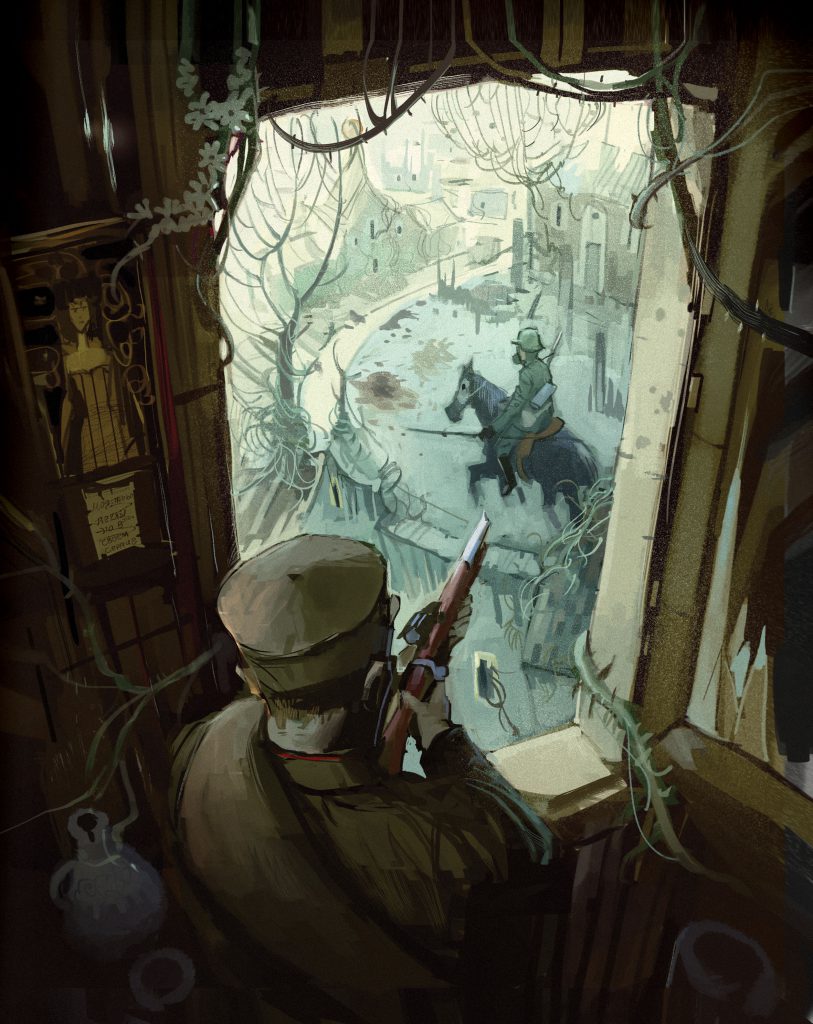
My wife and I are both English teachers, so we can appreciate a well-made book. AWT looks good on a shelf, and has great book feel. The pages are a nice parchment eggshell color, decorated with little occult doodles to break up the text. Scattered throughout the book are evocative full-page illustrations by Dimitris Martinos’ that give tons of inspiration, and frankly, are worth the price of purchase alone.

World-Building
The lore of A War Transformed is one of its strongest assets. In the midst of the Great War an asteroid strikes the moon, disrupting its orbit and moving it closer to the Earth. As a result, the seas recede and areas previously covered by water are suddenly traversable – namely the Dogger bank, which now acts as a land bridge to Britain.
The idea of “Perfidious Albion” suddenly being deprived of the protection of their navy and having to defend itself from a German army marching on them is like something out of Napoleon’s wildest dreams, and I love it. To make matters worse for humanity, dormant pagan spirits have been reawoken by the catastrophe and are reshaping the fabric of society with their powers and demands for sacrifice.
One thing I really appreciate is that, while the setting is undeniably bleak, the author resisted going full grimdark. This setting could very easily have gone down the path of Lovecraftian horror, but the old-world quality of the spirits and creatures instead provide an interesting contrast with the bleak industrial hellscape humanity has created. AWT fully embraces European folklore, and thus creates interesting juxtapositions of industrial might vs. magic. It is quite possible to end up in situations such as a machine gun team desperately trying to cut down a herald of the harvest, adorned in flowers, dancing ever closer with its razor sharp scythes, or a living tree body-slamming a Mark IV tank to pieces.
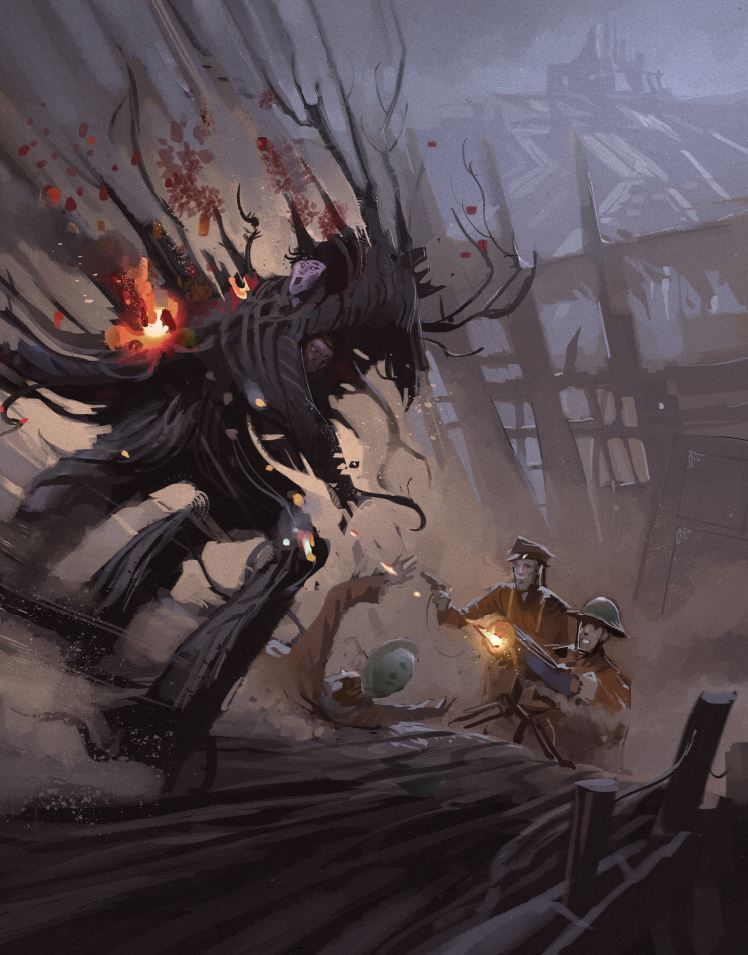
One of the central tenants of the lore is that blood empowers these spirits and drives regrowth. As a result, battlefields like Verdun can be transformed overnight from shell-blasted hellscapes to verdant wilderness as life literally springs out of the ground from the bloodshed. This is one of the strengths of AWT. It imagines the Great War as more than just trenches and barbed wire. The infusion of magic makes practically any type of battlefield a possibility here, including the Doggerland Front, which one can festoon with all sorts of unusual terrain pieces, such as sunken ships and rotting whales.

Organization
While AWT shares similarities in setting with Dracula’s America or Silver Bayonet – in terms of design philosophy, AWT is decidedly old-school. I think it actually has more in common with mid-2000’s Games Workshop games, possessing that same peculiar mixture of grand ambition and resistance to abstraction that you’d find in a game like Warhammer Fantasy. AWT combines the granularity and customization of a low-model-count warband game with the size of a mass skirmish game. It can quickly become overwhelming.
Take Hero units, which have an array of customization options. Each patrol is led by a Captain who can choose up to three orders to shout at his men. He can also customize his weapon loadout, purchase magical items, select a mount, and choose a zodiac sign for a specific buff. Repeat for your Witch and any other hero units. The end result is that each hero has a dizzying array of abilities, bonuses, and equipment – the rules of which are all located in different parts of the rulebook.
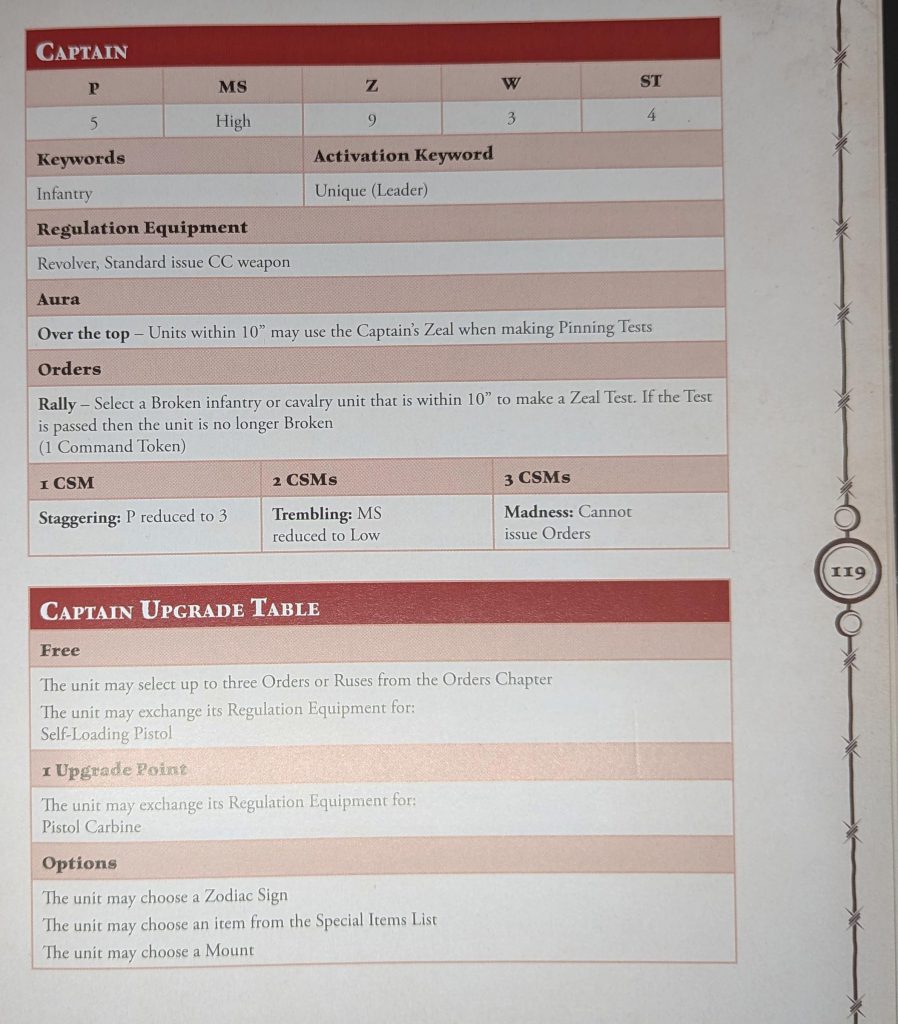
AWT uses a keyword system, which I generally like – the issue being the amount of keywords each unit may have. Units can have up to five keywords that provide different abilities, bonuses, or attributes. Then each weapon and equipment option for a unit might also have up to four more keywords.

Most keywords are found in the keyword section, but not all of them, while other keyword definitions can be maddeningly obtuse. After shooting an enemy with the Devastating keyword I laughed in frustration upon heading to the keyword section to look up Devastating to find it simply states: “Any unit hit by a Devastating weapon must take a Devastating Test for each Wound suffered”.
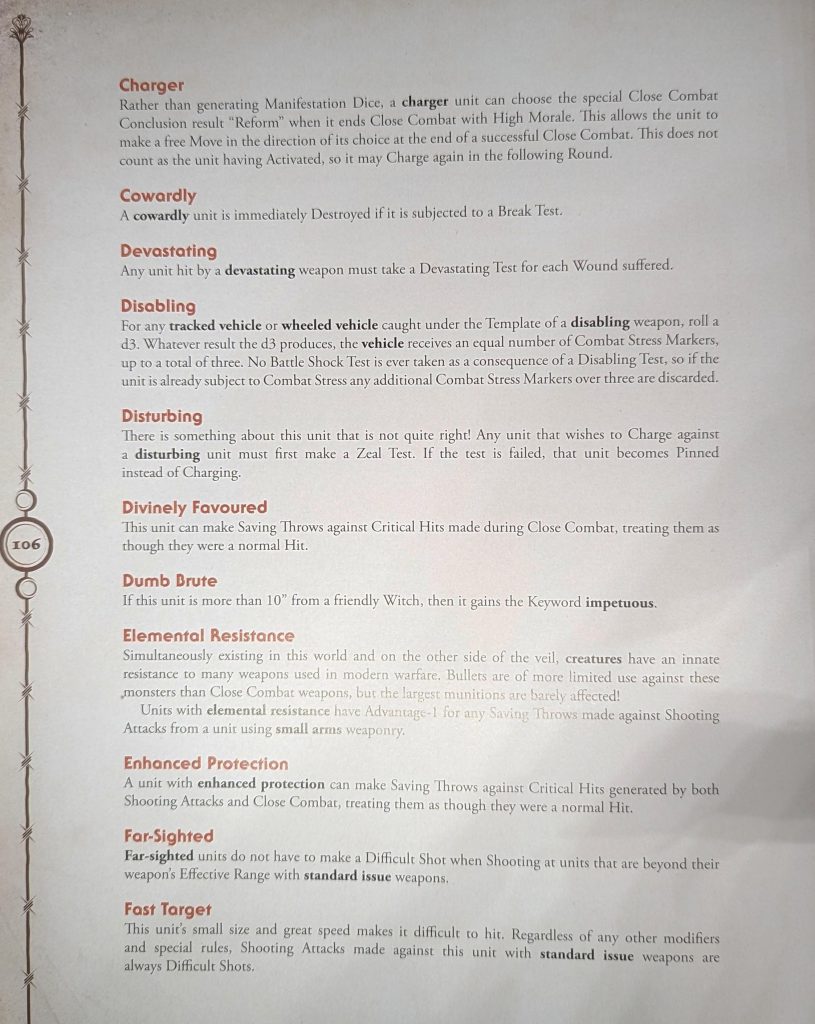
Ok, so what is a Devastating Test? Or at the very least, on what page could I find the rules for that? There are too many “sorry, Mario, but the princess is in another castle” moments when flipping through the rulebook. Some of this could be mitigated if the book provided you with tools to help you find what you need – but there is no glossary, index, or quick reference sheet. The only resource available to players is the table of contents.
Design & Mechanics
Without beating around the bush – the mechanics of AWT are fiddly. Some aspects are fairly straightforward – movement and giving orders/casting spells being among them. But other parts of the game have what feel like, frankly, an inordinate amount of steps required to resolve them.
Close combat, for instance, involves consulting a chart to see how many attacks each unit gets, rolling on a chart to determine whether attacks hit, rolling saving throws, removing models, then each player using a chart to calculate their morale using their zeal and modifiers from the combat, then rolling on a morale table to decide how their unit reacts – which may then lead to Battle Shock Tests, a Manifestation Roll by the victor, and a Break Test by the loser. That’s four tables and up to seven sets of dice rolls to resolve one combat!

What really hurts AWT is the lack of a unified design philosophy. Each aspect of the rule set seems to use its own bespoke system of resolving things. What unified mechanics do exist, often have exceptions. The game primarily uses D6’s, but in a handful of places D10’s, in a few more D3’s, and in a single instance, D4’s. Low rolls are better than high rolls, except in a few places where you need to add the value of dice rolls together, in which case a higher roll is actually preferable.
The plethora of (only occasionally interacting) morale systems is probably the area with the most excess parallel mechanics. The amount of terms used is head-spinning. Units have Zeal and Morale, can Rally, Rest, become Pinned, Shaken, Broken, Combat Stressed, and Battle Shocked.
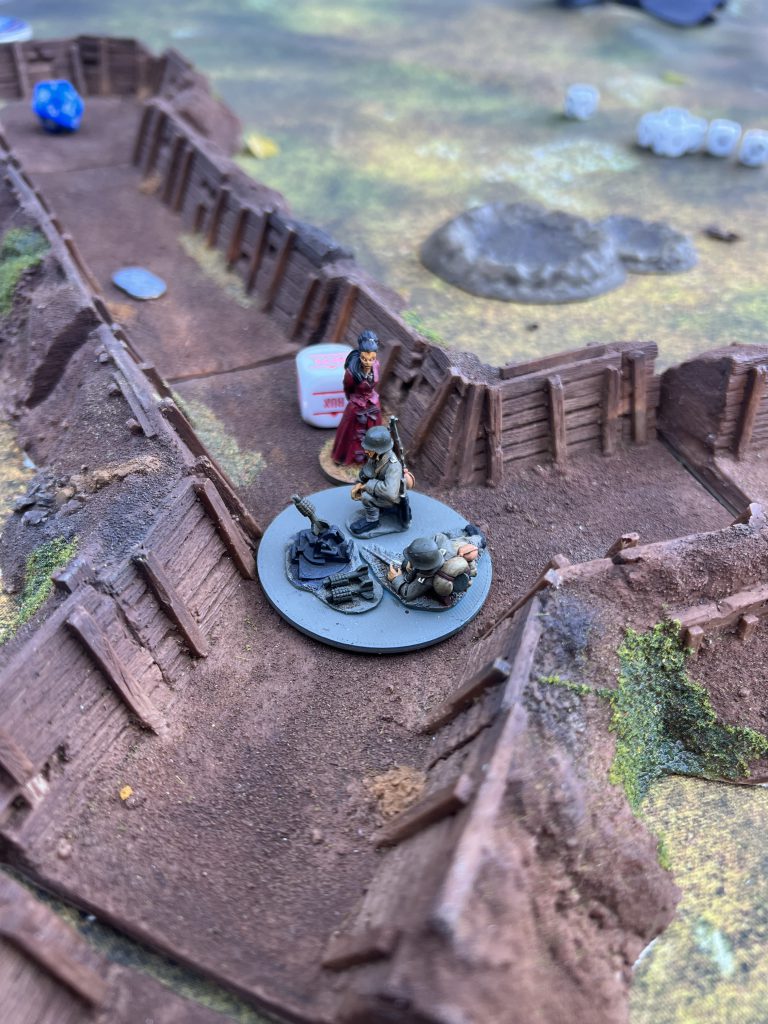
Which isn’t to say the A War Transformed in a bad game. It is actually pretty fun to play, once you’re playing it.
The author places a disclaimer at the front of the book warning players not to expect a faithful World War I simulator, but nevertheless, it does have good WWI flavor. Machine guns are an appropriate menace that can pin units down with weight of fire, snipers pick off soldiers, officers shout orders to get their men moving, and grenades are handy for blowing an enemy out of their trenches.
One mechanic I did enjoy are the command points, which are used to bid for initiative in the various turns, issue orders, cast spells, and activate abilities. There were always enough options vying for command points that I frequently had to make hard decisions about how to allocate my limited pool in a given round.
Orders also felt weighty and powerful, which made my officers a key part of my force that I ran back and forth during the battle to issue vital orders. For example, I used one order to infiltrate my Hexenjagers behind enemy lines, while the French used an order to move practically their entire force in one go.
Playtest
For our playtest Dan & I went with the Trench Raid mission, as it was the smallest of the scenarios.
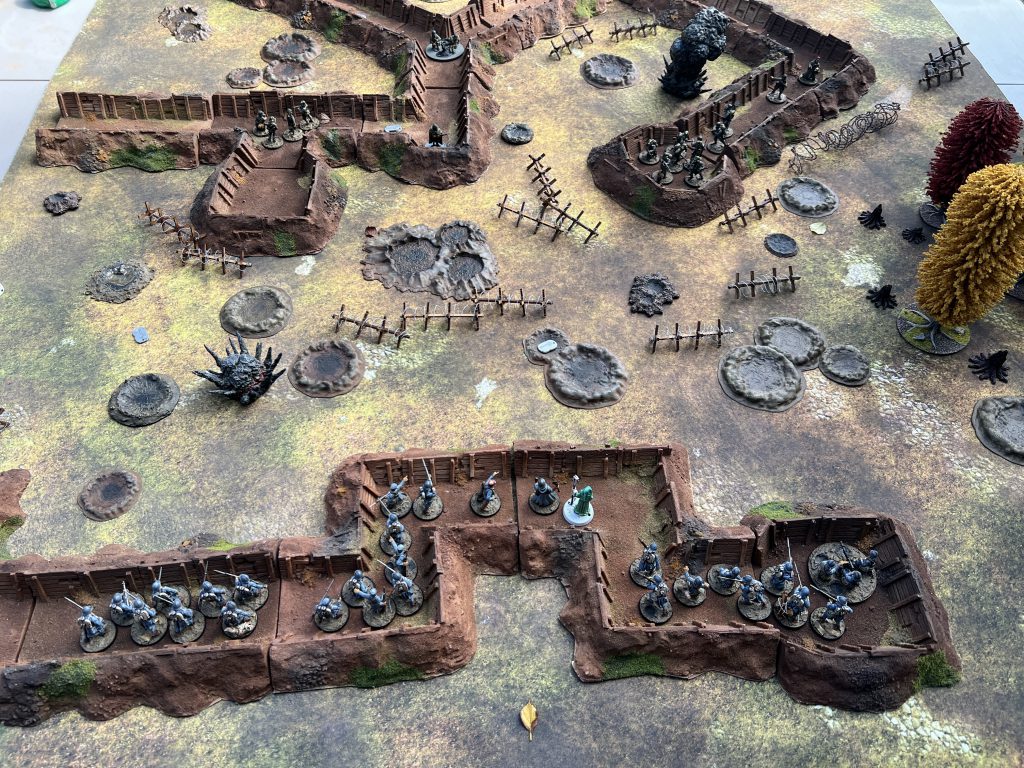
My Germans (20 models) were defending, and my force consisted of:
- x1 Captain
- x1 Witch
- x1 Infantry section
- x1 Sniper
- x1 Hexenjager squad (Witch hunters)
- x1 Stormtrooper section
- x1 Trench mortar
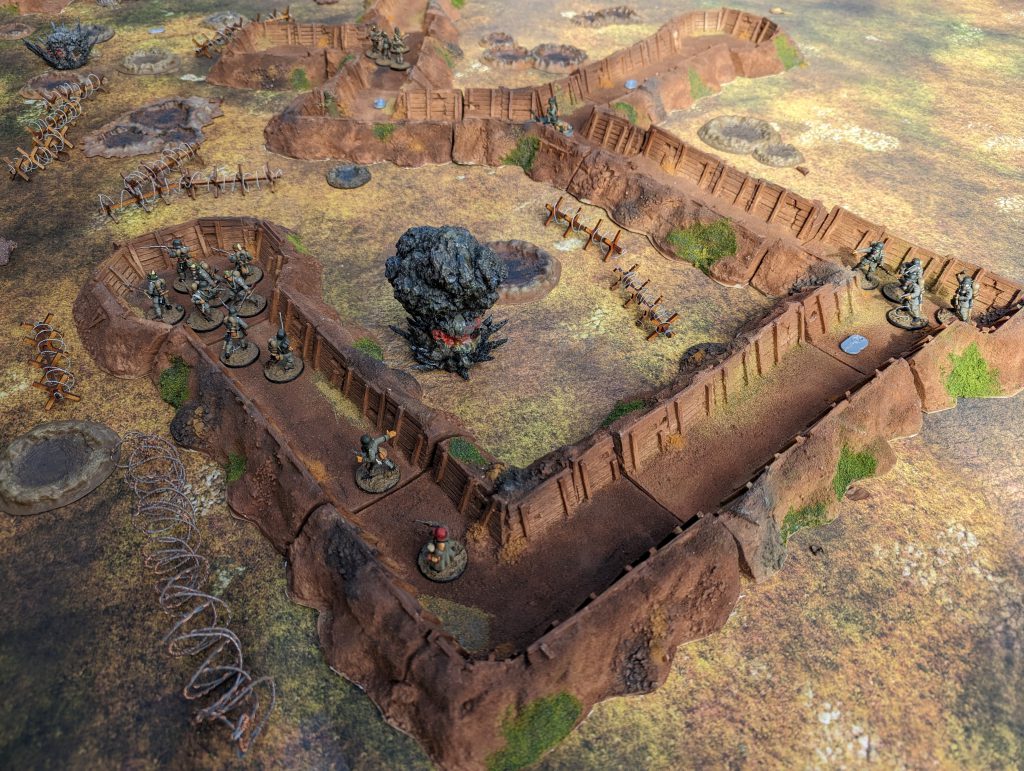
Dan’s French (28 models) had at their disposal:
- x1 Captain
- x1 Witch
- x3 Infantry sections
- x1 Machine Gun team
- x1 Vitiated Spirit (angry wood nymph, basically)

The French commenced the battle with an artillery barrage on German positions, which scattered off target without causing too much damage. The French then went over the top and attempted to storm the German positions. My stormtroopers took the brunt of French attention, but between their machine pistols and a judicial application of sharpened spades, managed to take many of the French attackers with them.
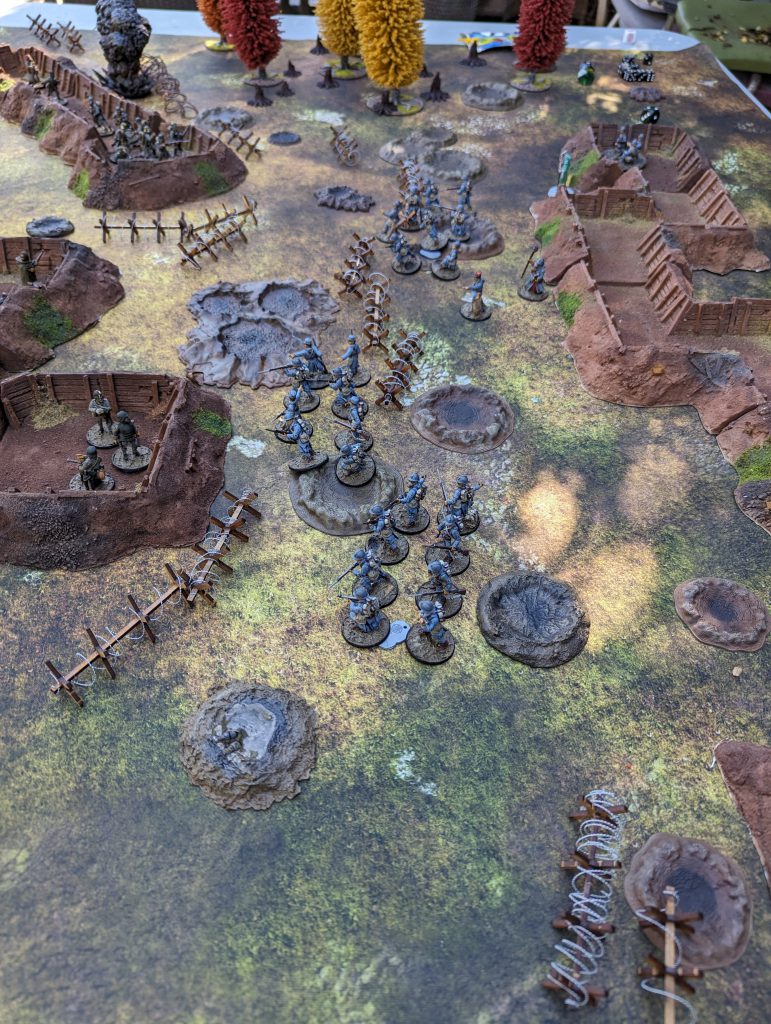
My infantry section on the left spent much of the battle pinned down by French machine gun fire, only really getting into action towards the end of the battle when the French machine gun was finally pinned by trench mortar fire. They launched themselves out of their trenches to get revenge on the French gunners, stopping to kill the French Captain with a hail of grenades along the way.

Meanwhile, using one of my Captain’s orders, I was able to redeploy my Hexenjagers behind French lines, in a gambit to track down and kill the French witch. Unfortunately, this backfired as they were quickly pinned down and dispatched by angry Frenchmen. Off to the left, the Viviated Spirit quietly seized an objective in a wooded area that my Germans did not feel suicidal enough to venture into.
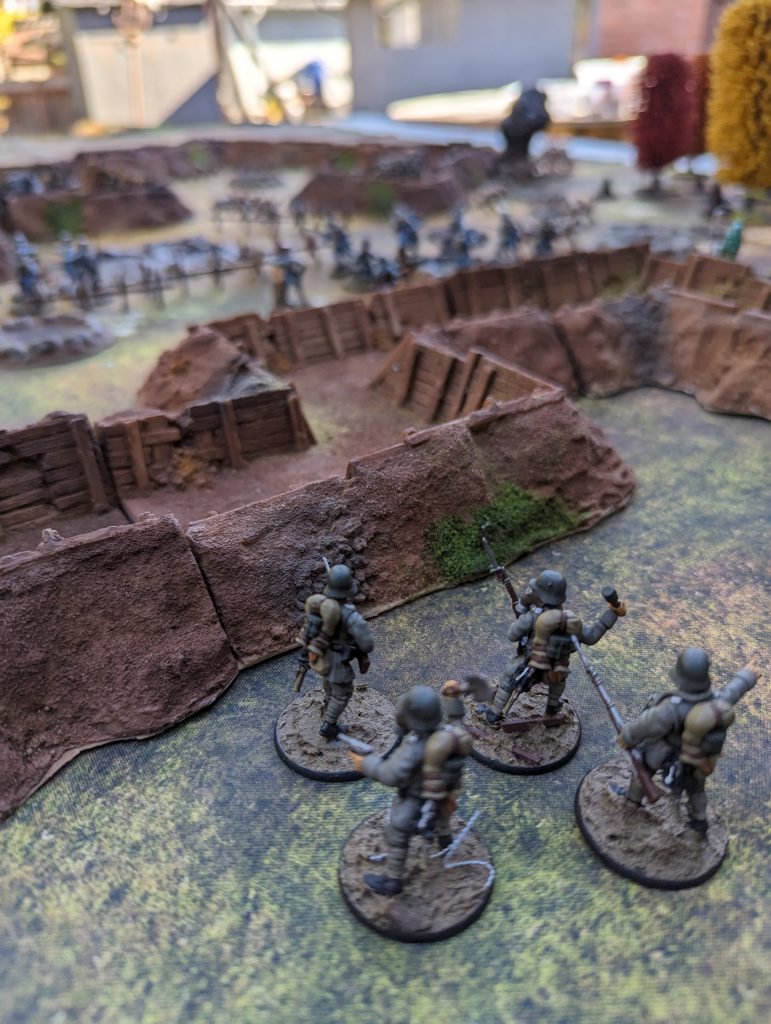
Only in the final couple turns had we gained enough Manifestation Dice to attempt to summon any supernatural creatures. My attempt failed miserably, but the French were able to summon some sort of water spirit in the middle of my trench that failed to lure my trench mortar team to their death, and instead settled on strangling them.
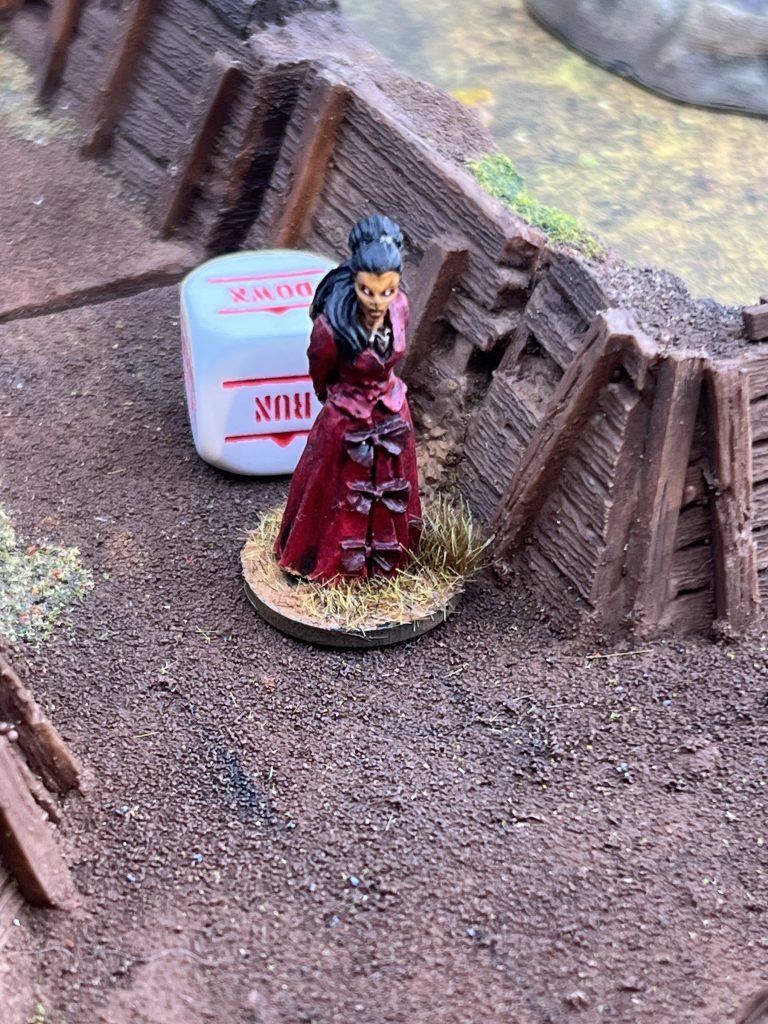
In the end, the French capture of several objectives was able to give them enough points to declare victory. The scenario had enough ways to score victory points that the end result was fairly close, and it wasn’t clear who won until we tallied things up (which is a positive in my books). Despite spending a lot of time consulting the rulebook, we did have a good time. The units felt pretty balanced and thematic. None of the units we choose felt useless, and the battle was hard fought.
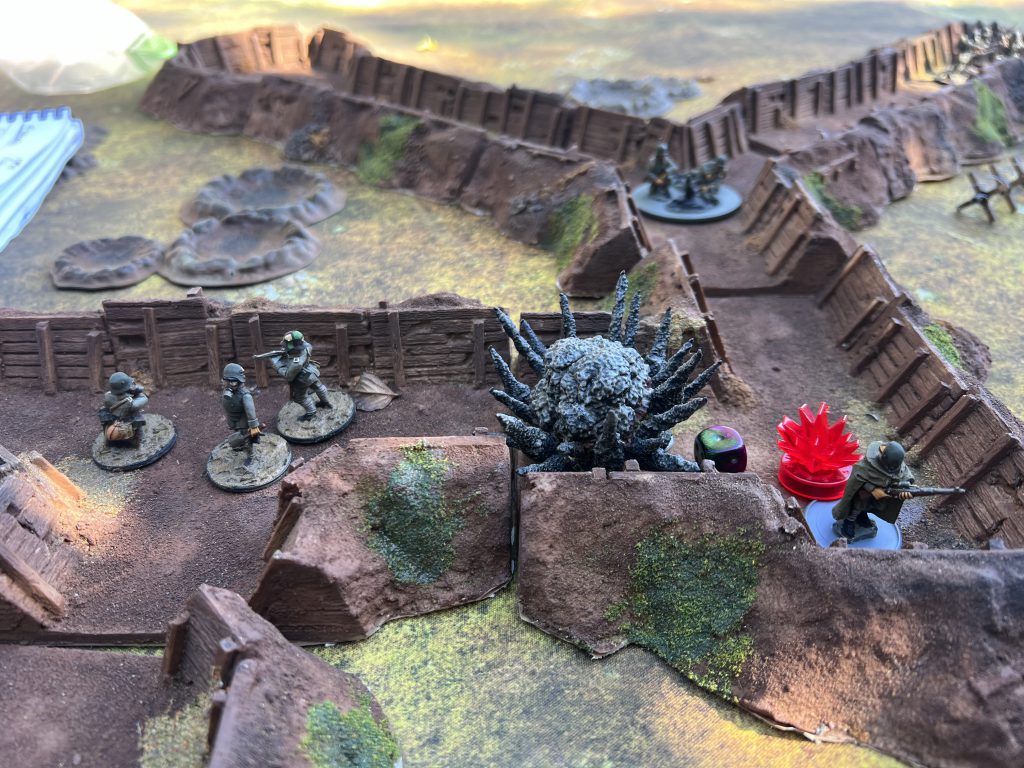
I was left, however, a little wary of attempting larger battles, considering the amount of page-flipping and chart-consulting required. Our game took four hours to complete and was half the point value of most of the other scenarios in the book. I can only imagine a force with 50-60 models spread across a dozen or more units being an all-day commitment – especially if you take some of the more complicated monsters or vehicles.
Final Thoughts
So, would I recommend this game?
Yes, conditionally. Although the setting and world-building are exactly up my alley, I struggled with it for two reasons – one objective, and one subjective.
Objectively, I think I can fairly say that the rulebook is difficult to use because of the layout. With 200 pages of rules and no glossary, index, or quick reference sheets – just finding the rules you need is a challenge. This could be somewhat resolved if one adorns their rulebook with sticky notes, build a cheat sheet for your force, and obtain an official quick reference sheet (once available).
My other issue with the ruleset is more subjective: I prefer my rules lean, elegant, and easy to remember – and AWT isn’t. I only get to wargame once a month and we play a variety of rulesets at our club. It might be a couple months before this game hits the table again, and the byzantine construction of parts of the ruleset means it’s likely that next time this gets played it will be like starting from scratch. I also just can’t shake the feeling that this game would be better if significant portions of the rules were either merged together or simplified.
That being said, your mileage may vary. My friend Dan was significantly less troubled by the peculiarities of the rules. For one, I was the one consulting the rulebook, so as I flipped through pages, scratching my head in bemusement, he was able to sit there, blissfully ignorant, staring out at the lovely table we’d set up until I had deciphered what to do next.
Another aspect I think helped him make peace with the rules is Dan regularly plays 40k – and found several few parallels between AWT and 40k mechanics, which I – the historical wargamer – was baffled by.
So, who would I recommend this game to? For some people, I think these rules will drive them as mad as a soldier stuck under artillery bombardment for too long. Other, more patient wargamers, who don’t mind a very granular, sometimes awkward, set of rules may not mind it so much. The book is beautiful, the lore and community are very cool, and it provides some awesome inspiration for modeling opportunities.

I will still display the book proudly on my shelf, and continue participating in the lovely AWT community. I’d also gladly play it again, so long as someone else is on rulebook duty.
Editor’s note: Osprey has released an errata/FAQ (quickly!) for A War Transformed that addresses some of the issues brought up in this review. You can find it here.
Questions, Comments, Suggestions? Contact@goonhammer.com or leave a comment below
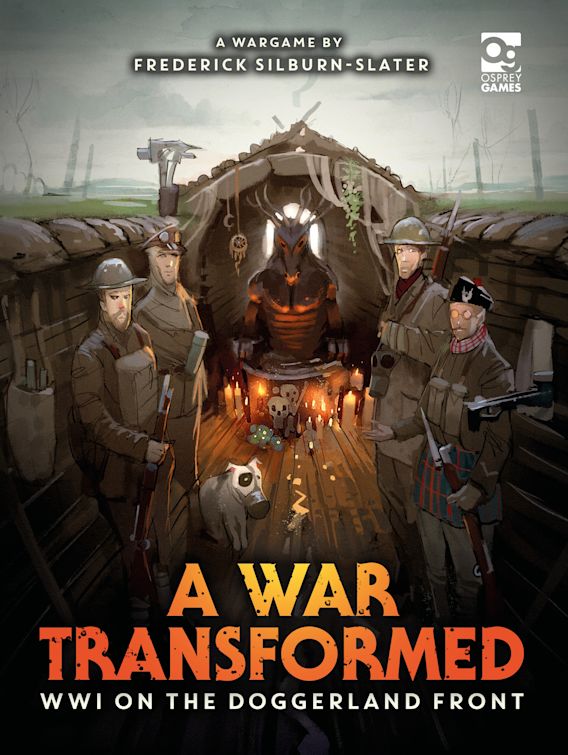


You must be logged in to post a comment.